In the world of diving guards, the landscape was always dominated by some heavy rackets that came into play early, made a name for themselves and never gave. Brands such as Rolex, Omega, Blancpain and Seiko were always inseparable from the history of the diving guard and for a good reason. But a deeper dive (forgiveness of the pun) in the history of the diving guard shows that there were many others who were just as big in the early diving clock scene (I can't stop). Favre Leuba in Switzerland is one of these brands and I had the opportunity to take the deep renaissance for a proverbial leap!


Story
The story of Favre Leuba can be traced back until 1718 astonishing 307 years. At that time, a young Abraham Favre started with his training in Le Lokle, basically the place of birth of the Swiss watch feeling, at the age of 16. Until 1737 he was listed in official documents as an independent watchmaker and around 1749 he was appointed “Maitre Horloger du Lolle” (Master Watchmaker from Le Lokle). In this era, Favre would work with the titans of the day like Jacques-Frédéric Houriet (the father of Swiss chronometry) and a man who does not need an introduction, Abraham-Louis Breguet, although specific details of these partnerships are sparsely. The habit of history to keep all records in wooden buildings on paper had the unfortunate side effect to burst in flames.


It is a bit difficult to pursue the brand's early trajectory because there were several family members named Abraham and Henri, but in 1815 the original grandson of Abraham Favre, Henry-Augustus Favre, with Auguse Leuba, a member of a family of the watch name, worked for creating the brand name Favre-Leuba. In this partnership, the brand outside of Switzerland would expand to the rest of Europe, America and Asia and also to India in 1865, where they were the first Swiss watch brand to enter the Indian market and where they would remain popular to this day.
Favre-Leuba spend the next 100 years as a successful Swiss watch brand, whereby she went from pocket watches to wristwatches and showed their goods regularly at the Basel Watch Show and Salon Montes de Bijoux. In 1955 they left a trio water -resistant watches with internal movements called Sea Chief, Sea Raider and Sea King. This was Favre-Leuba, which dipped her toes in the waterproof watch basins, which led to the publication of her first real diving guard in 1960, The Water Deep.
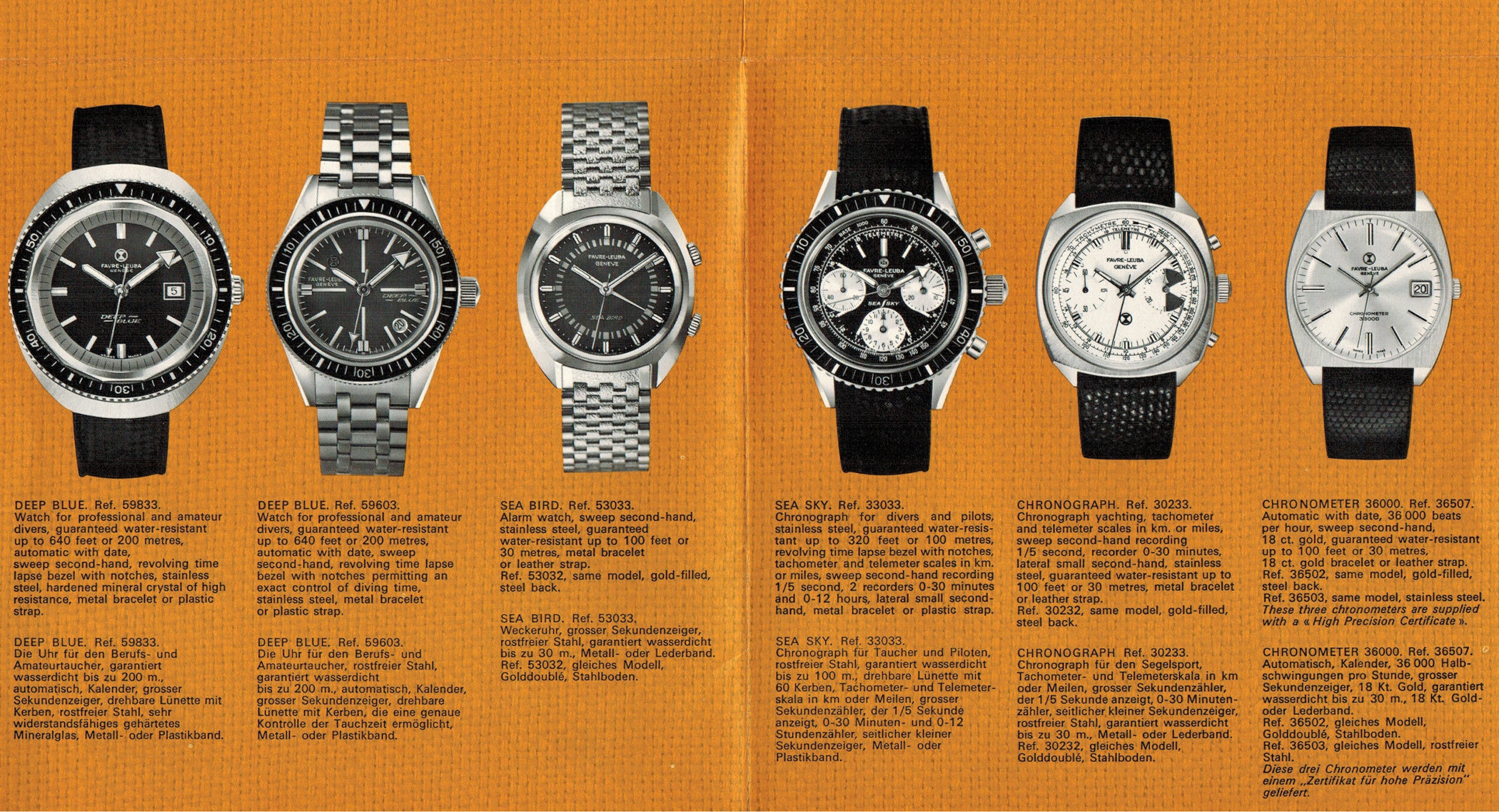

Shortly afterwards, Favre-Leuba went hard into the adventure clock room and published the famous Bivouac in 1962, the first mechanical watch, which included an aneroid barometer for measuring the height and made it an indispensable tool for mountaineers. In 1964, the release of The Deep Blue (the forerunner of the watch we dive with today), one of the few watches that boast 200 m water resistance, would be a big yardstick for this time. In 1968 they published another world -ready bath, the first mechanical watch, which included a deep display for diving. And in 1969 Favre-Leuba became a sister brand of Jaeger-Lecoultre. So if you are really lucky, you can find some intersections with a cross brand from this time. To mention unnecessarily that the 1960s were a big decade for favre leuba.


Fast lead in the 1980s, and I bet you can guess what came next. The same sad story that we have heard over and over again, Favre-Leuba hit the quartz crisis to a fatal blow and forced the family to sell the brand after more than 250 years. Over the next 40 years, the brand name would change several times with different success and restart several times, but would never reach the previous levels. The most recent relaunch took place last year in 2024. The industrial veteran Patrik Hoffmann at the top and published three cornerstones: The Chief, The Sea Sky and The Deep Raider. Now that the long and famous story is cleared out of the way, let us go into it.


The clock
The new Renaissance of Favre Leuba Deep Raider is a 40 -mm -edge steel diving guard. It is loosely inspired by the Deep Blue from 1960, but was more modern than vintage inspired. Favre Leuba kindly sent us the green version for diving and reviews and is also available in a beautiful blue color and a steamed black.
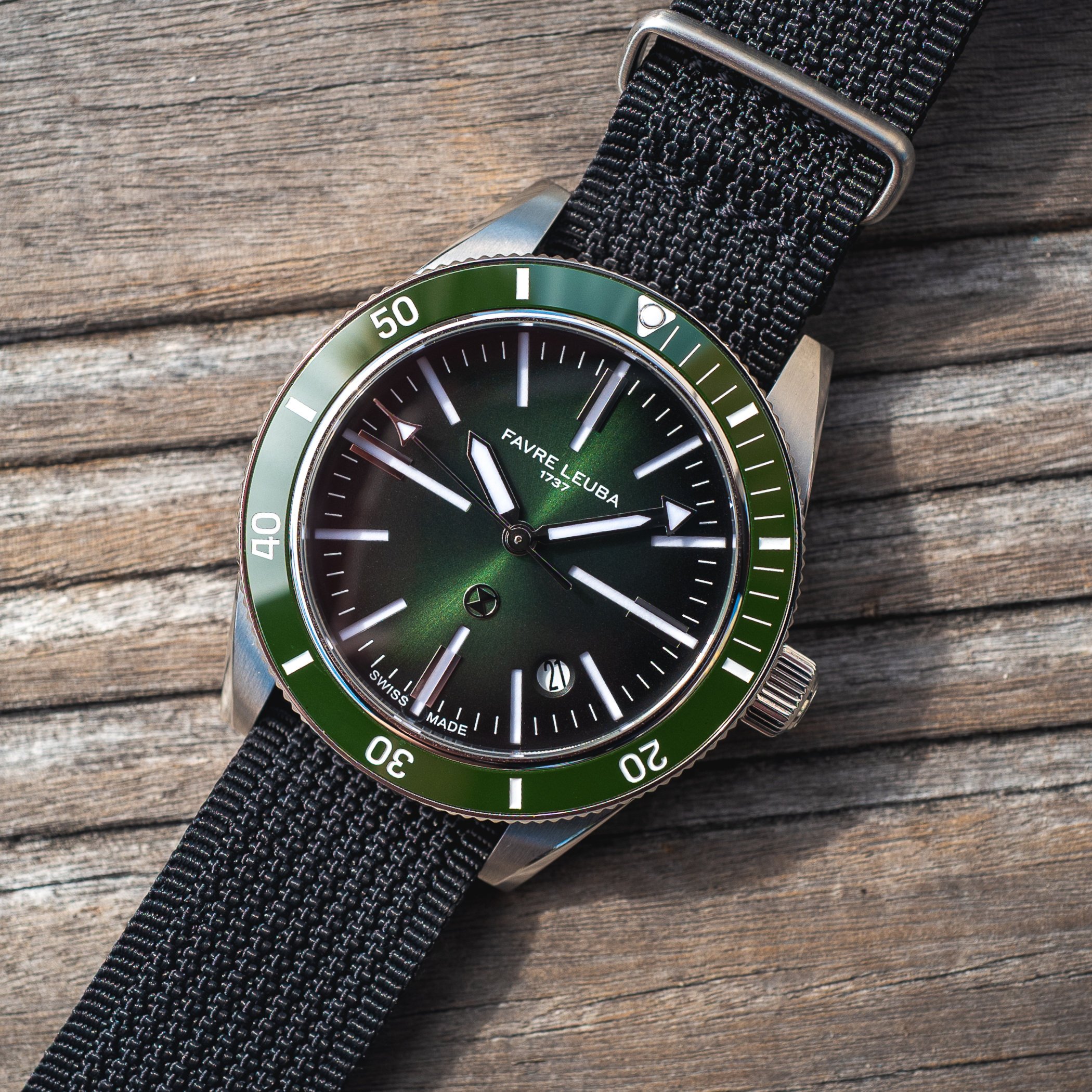

The dial of our version is a pleasant green tone that is somewhere between a Kelly green and a forest green when I was forced to describe it. It has a very light sun burst surface with a gradient that becomes a little darker when it approaches the edge of the dial. It is constructed in a sandwich style, using excerpts for the indices that show a loud layer underneath, always an interesting note that gives the dial a little depth. In this sense, the lume in the indices and hands is sufficient and ensures a very readable watch in poor lighting conditions. You will find the text “Favre Leuba 1737” below the 12 o'clock position and your small sand glass logo over the 6 o'clock position. The hands are out of the sword, and the minute's hand keeps the arrow at the end, a design note from the deep blue from 1960, and is a feature that I always love for inexplicable reasons. There is a circular date wheel that is placed inconspicuously at 4:30 a.m. and a very slightly arched sapphire crystal protects the dial.
The ceramic bezel is a suitable green color and the 120-click variety. There is a beautiful amount of rurling around the edge, which gives a significant grip, and the leaf effect is very nice, with a kind of smooth clunk being produced in every position instead of a hard crack, and yes, these are high -technical terms. The case itself is usually a brushed finish with a few hints of polishes and some beveled edges, which is only added a bit of elegance, perfect for the standard Smokedo dinner after the tive.
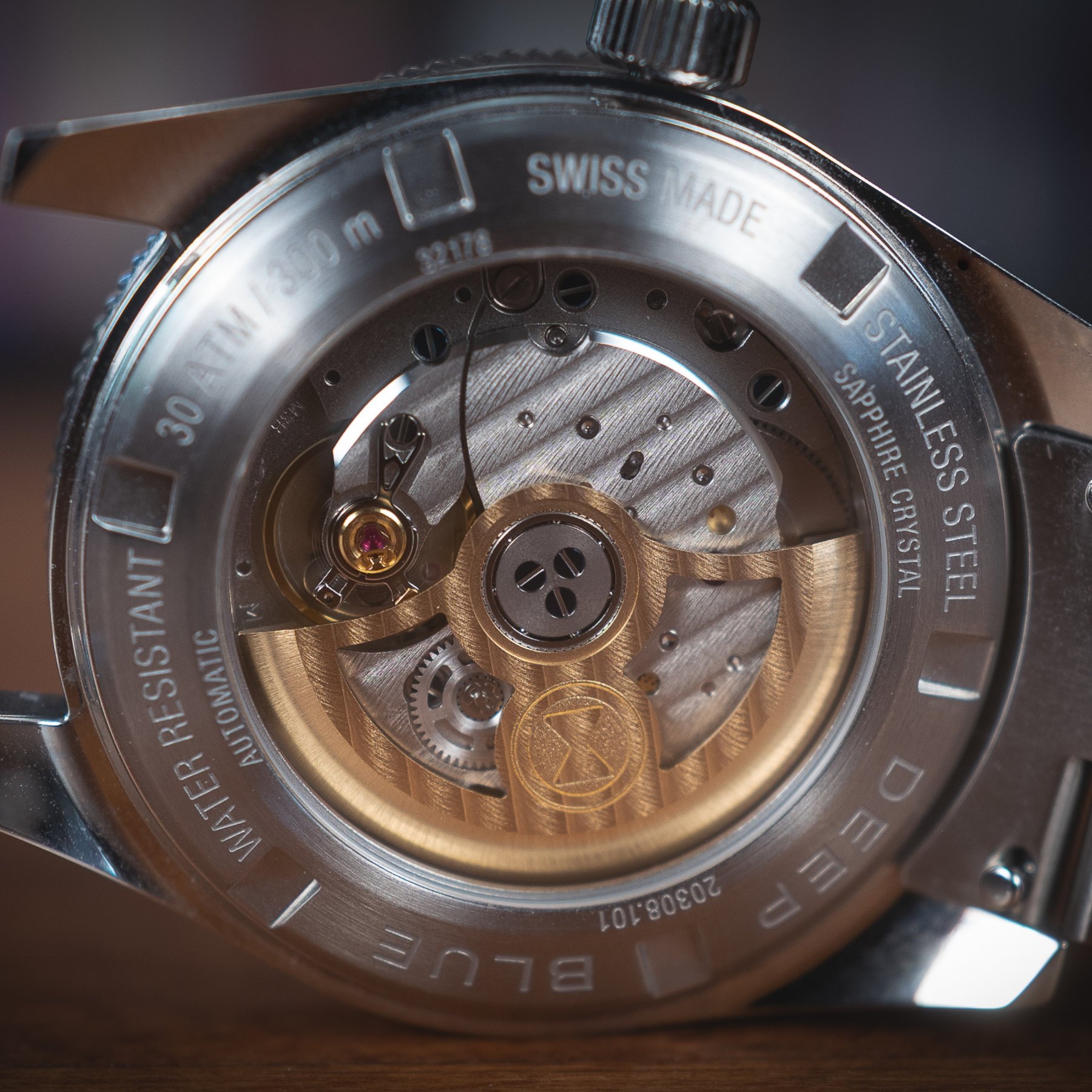

The movement in the core of this watch is the FLD02. This seems to be based on the La Joux-Perret G100, as this is the movement with which they were originally started, but the details of changes are sparse. Regardless of the name, the specifications are very solid; This is an automatic time and date automatic movement, which is beaten at 28,800 VPH with an excellent electricity reserve of 68 hours. The finishing of the movement is also very well done and meticulously and shows Côtes de Genève on the main plate and the Solleilage on the customer -specific, skeletonized rotor. All of this is visible through a sapphire string caseback, a rarity on a 300 m water-resistant diving guard, but here is a welcome addition because the movement is beautiful to look at. These watches are available on color-coordinated rubber belts or a very well-made 3-link bracelet with butterfly closure and quick publication rods how our rating model was delivered.
On the wrist
The watch on the bracelet is excellent and very comfortable on the wrist. The 40 -mm diameter and the 12.5 mm thickness are exactly in the Goldillocks zone for most wrists. The bezel is very useful to play different things all day long, and the watch does a great job to span the border between Toolish-Ly Rugged and Elegant Chic, which is not an easy task. You could really wear it to the beach and then at a wedding, just like the clichéd nowadays. The entire package feels very well done and extremely solid, from the bracelet to the blind action to the wrapping and setting of the crown.
My only complaint would be that the butterfly closure of the bracelet does not allow diving extension, but after a quick exchange against a black NATO strap (which looks with the green killer), the clock was ready to dive.
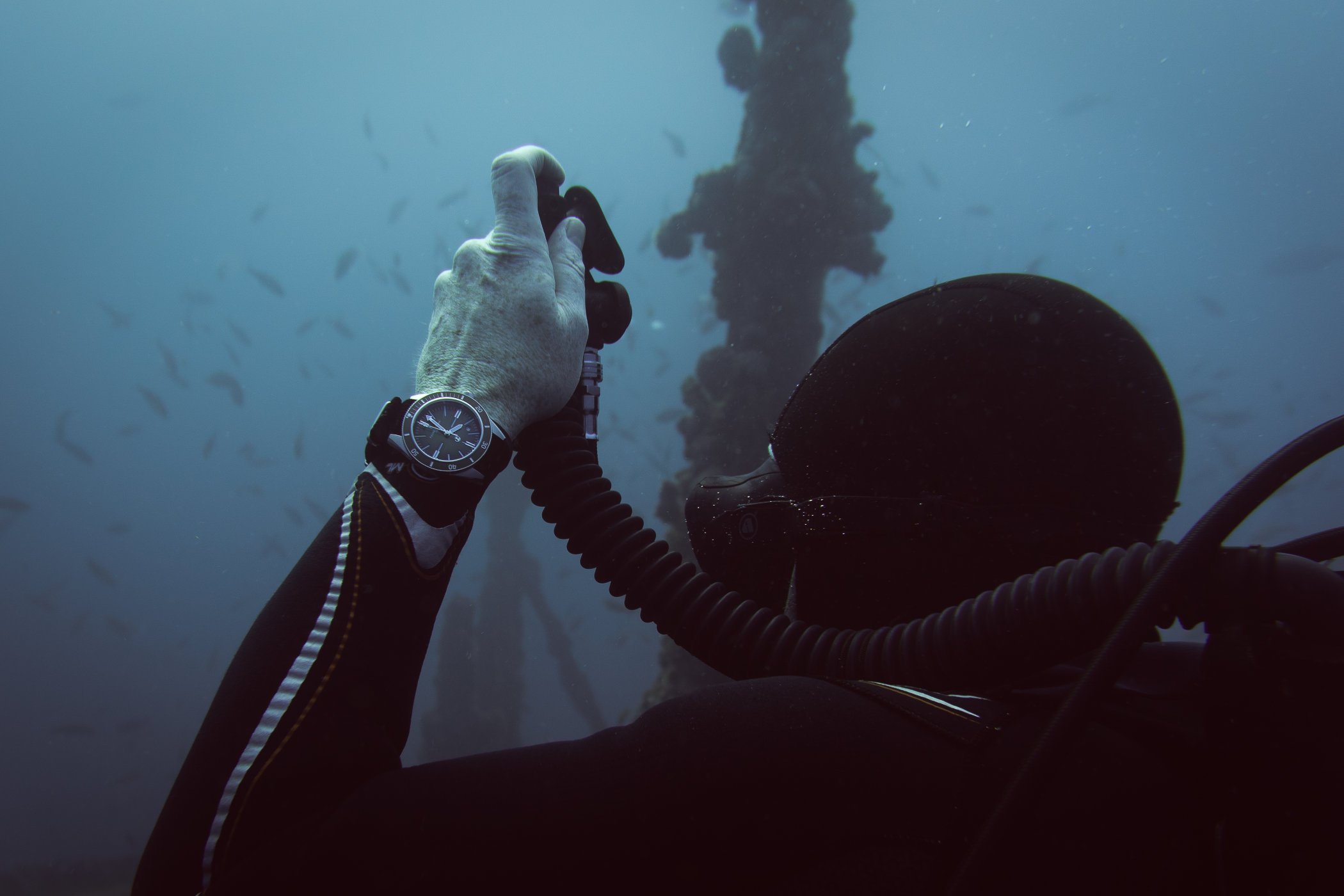

In water
On the relaxing boat trip to the diving area, the watch looked very cool and unique with its reserved green charm. With a wetsuit, it fulfilled its tasks like a champion among the Cerulean waters of the Atlantic. Adjusting the bezel with a treated hand at the beginning of the dive was a child's play, and then the watch is left to its own devices, and tacitly took care that they only use their steady heartbeat. Technically speaking, Green is one of the later colors of the spectrum to disappear in depth due to science, so that green at the Depth of about 100 feet on the wreck of the Lady Luck, an old 324-foot anchor off the coast of Pompano Beach, Florida, was still completely visible. Since we all know that chic computers are dealing with all the complex compression sciences and mathematics for divers these days, the modest wristwatch can take a more relaxed position as a backup and even more important than a bit of relic, on which you can meditate and return from all the complexity and Bells and whistles and can return to the procedure of the procedure of the procedure. At least it works for me, just don't forget to breathe.
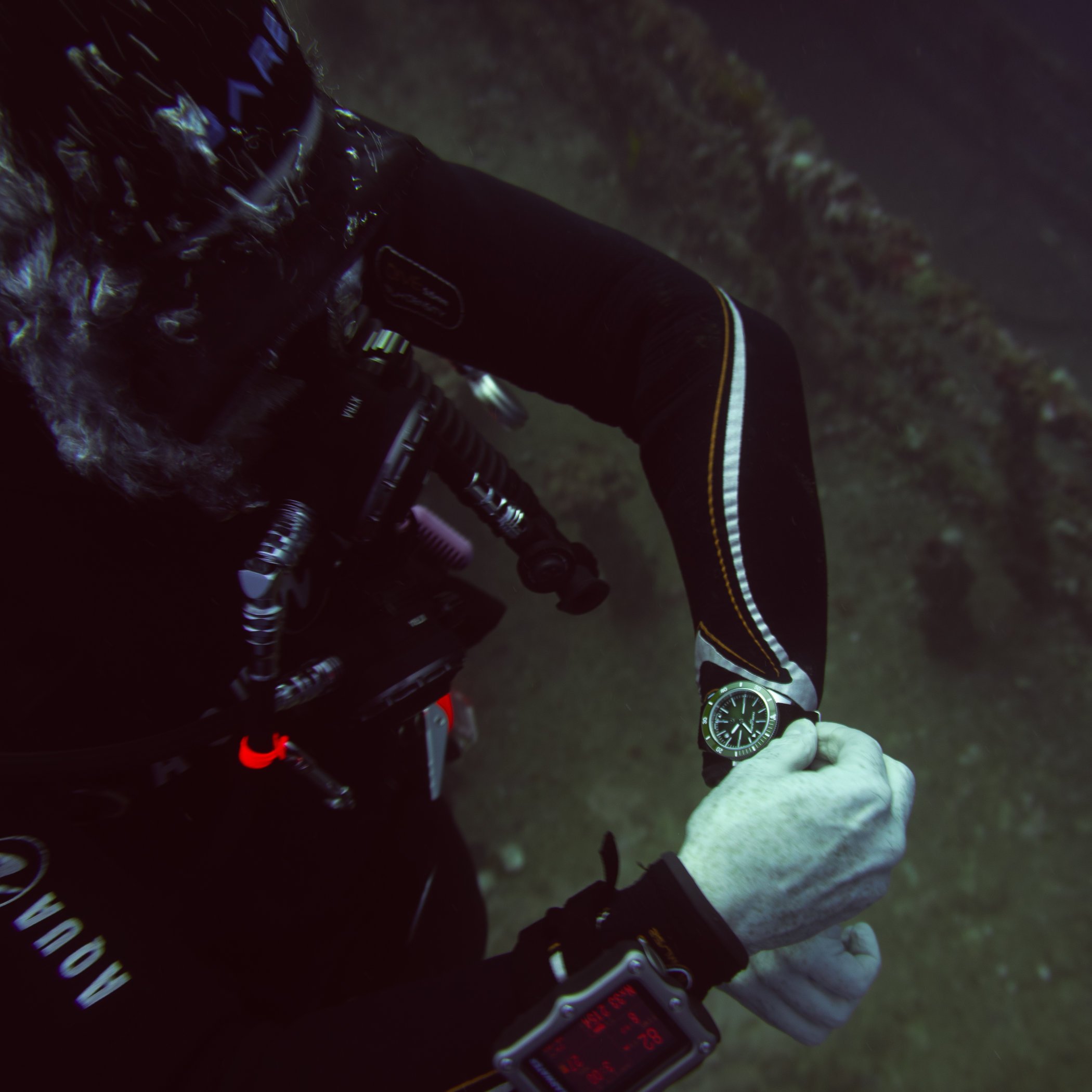

Last thoughts
With such a rich and famous story with countless innovations and iconic watches in the archive, it is great to see the Favre Leuba name again on a solid diving station. With such origin of the diving, I look forward to seeing what comes next from the brand. I hereby officially register my voice to bring the bathroom, one of its sizes of all time back, but I will leave it in the hands of the experts.
Availability and price
The Favre-Leuba Deep Raider-Renaissance is available with a rubber belt or a redesigned 3-link steel bracelet. Despite the fact that it is evenly finished, the profile of the links gives him a certain character. Overall, it is a very nice watch with a great size and a very appealing vintage design. It sells for USD 2,550 At the rubber belt, or USD 2,650 On the steel bracelet.
For more information, see Favre-leuba.com.
https://monochrome-watches.com/in-deth-review-favre-leuba-yep-rider-renaissance-lajoux-perret-g100-specsprice-live-pics/